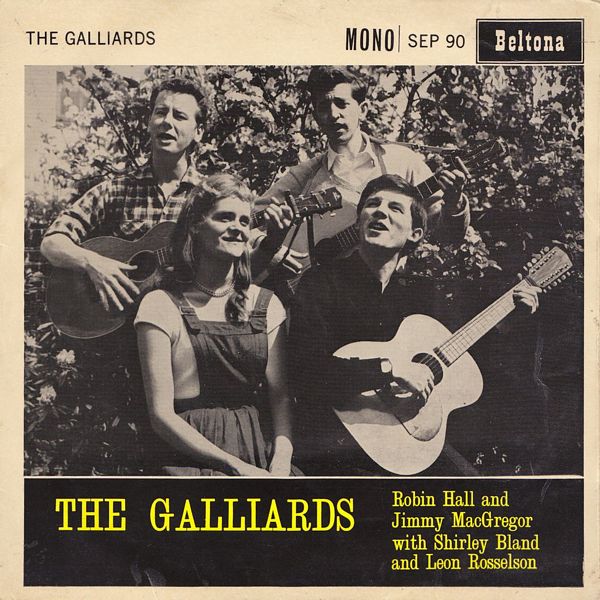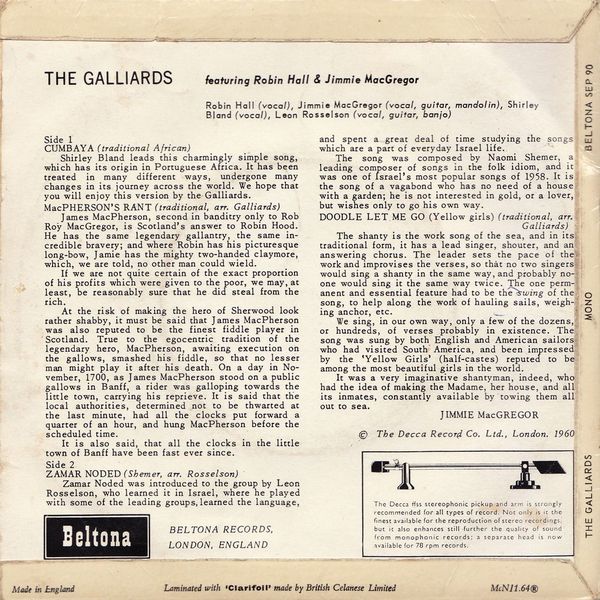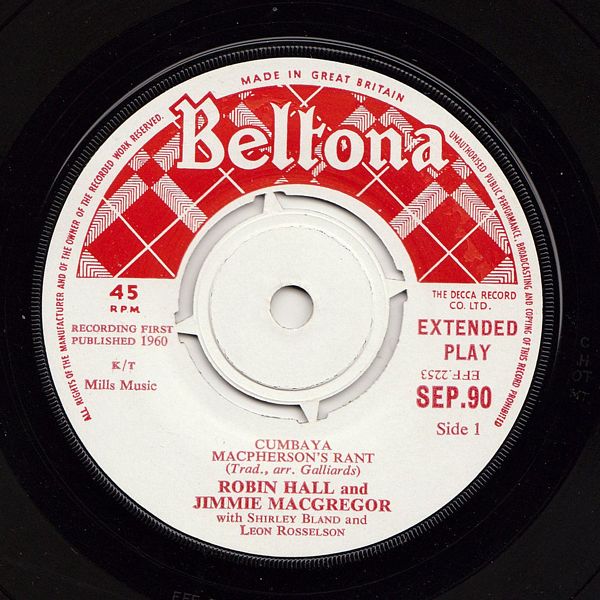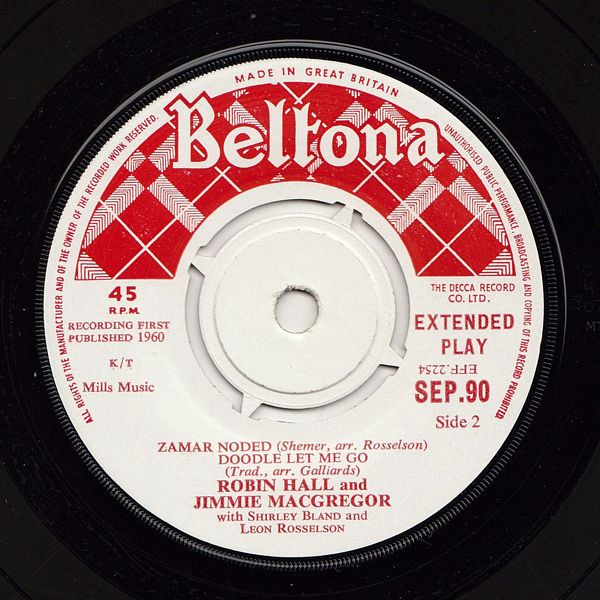

 |



|
Sleeve Notes
CUMBAYA — Shirley Bland leads this charmingly simple song, which has its origin in Portuguese Africa. It has been treated in many different ways, undergone many changes in its journey across the world. We hope that you will enjoy this version by the Galliards.
MacPHERSON'S RANT — James MacPherson, second in banditry only to Rob Roy MacGregor, is Scotland's answer to Robin Hood. He has the same legendary gallantry, the same incredible bravery; and where Robin has his picturesque long-bow, Jamie has the mighty two-handed claymore, which, we are told, no other man could wield.
If we are not quite certain of the exact proportion of his profits which were given to the poor, we may, at least, be reasonably sure that he did steal from the rich.
At the risk of making the hero of Sherwood look rather shabby, it must be said that James MacPherson was also reputed to be the finest fiddle player in Scotland. True to the egocentric tradition of the legendary hero, MacPherson, awaiting execution on the gallows, smashed his fiddle, so that no lesser man might play it after his death. On a day in November, 1700, as James MacPherson stood on a public gallows in Banff, a rider was galloping towards the little town, carrying his reprieve. It is said that the local authorities, determined not to be thwarted at the last minute, had all the clocks put forward a quarter of an hour, and hung MacPherson before the scheduled time.
It is also said, that all the clocks in the little town of Banff have been fast ever since.
ZAMAR NODED — Zamar Noded was introduced to the group by Leon Rosselson, who learned it in Israel, where he played with some of the leading groups, learned the language, and spent a great deal of time studying the songs which are a part of everyday Israel life.
The song was composed by Naomi Shemer, a leading composer of songs in the folk idiom, and it was one of Israel's most popular songs of 1958. It is the song of a vagabond who has no need of a house with a garden; he is not interested in gold, or a lover, but wishes only to go his own way.
DOODLE LET ME GO (Yellow Girls) — The shanty is the work song of the sea, and in its traditional form, it has a lead singer, shouter, and an answering chorus. The leader sets the pace of the work and improvises the verses, so that no two singers would sing a shanty in the same way, and probably no-one would sing it the same way twice. The one permanent and essential feature had to be the swing of the song, to help along the work of hauling sails, weighing anchor, etc. We sing, in our own way, only a few of the dozens, or hundreds, of verses probably in existence. The song was sung by both English and American sailors who had visited South America, and been impressed by the 'Yellow Girls' (half-castes) reputed to be among the most beautiful girls in the world.
It was a very imaginative shantyman, indeed, who had the idea of making the Madame, her house, and all its inmates, constantly available by towing them all out to sea.
JIMMIE MacGREGOR